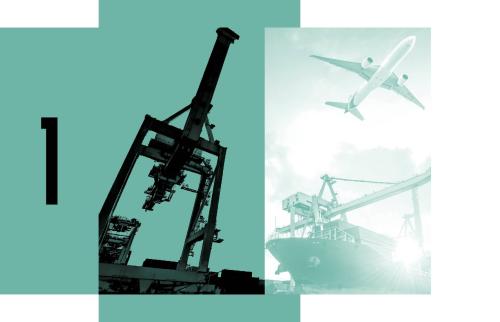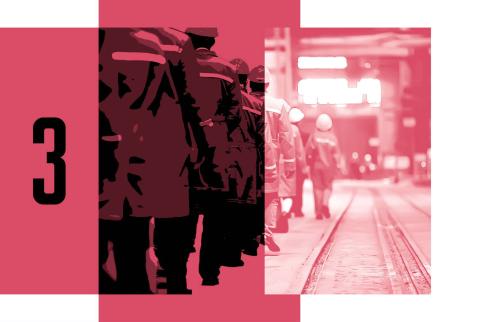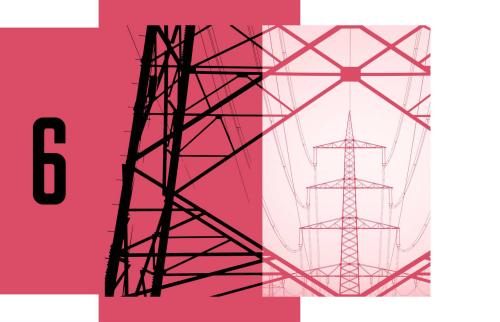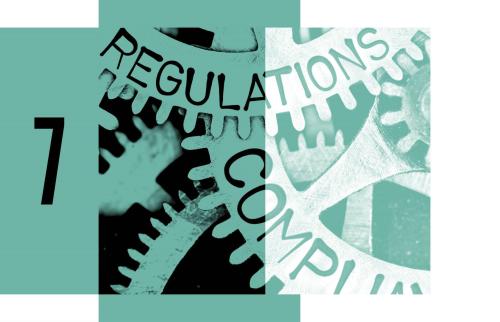This chapter is part of USMCA Forward 2024.
The USMCA’s Facility-Specific Rapid Response Mechanism (RRM) is the first of its kind, but it may not be the last. As the United States presses other trading partners to consider implementing such a tool in other trade agreements, the time is ripe to take stock of the tool and its track record to date.1
The RRM was negotiated late in the revised North American Free Trade Agreement (NAFTA) negotiations. In 2019, after having taken control of the U.S. House of Representatives, congressional Democrats insisted on the RRM’s inclusion. Proponents saw the RRM—together with the extensive reforms of Mexico’s labor law apparatus required by the agreement’s labor chapter—as the primary reason for the broad bipartisan support the USMCA garnered. They viewed the extensive emphasis on labor matters in the agreement as marking a new era for trade and an important step forward.
They viewed the extensive emphasis on labor matters in the agreement as marking a new era for trade and an important step forward.
The RRM is designed to protect workers’ collective bargaining rights at worksites in North America. It allows one of the three governments to impose tariffs or exact other penalties on goods and services from facilities where that government has a good faith belief that there has been a denial of those rights. The governments can activate the RRM regarding a facility in a “priority sector,” defined as “a sector that produces manufactured goods, supplies services, or involves mining” if the facility produces goods or supplies services traded between the parties or that compete in the territory of the other party. At the moment the initiating government activates the tool, that government may “delay final settlement of customs accounts related to entries of goods” coming from that facility.2
If the two governments both believe a denial of rights has taken place or is ongoing, they may agree to pursue a “course of remediation”: a plan for resolving the labor rights violation. The USMCA does not prescribe the content of such plans but those to date have included, for example, requirements on the company and its workers to hold a new union vote and for that election to be monitored by external observers. Where no course of remediation is concluded or successful, the initiating government can decide to impose penalties on the company until the denial of rights is ameliorated. Those penalties can begin immediately with the suspension of liquidation of goods from that facility and, if the problem is not remedied, further penalties may include a loss in preferential tariff status. If the government where that facility is located is uncooperative, or if the two governments disagree, either government may call for the establishment of a panel of labor experts to determine whether workers are being denied their rights.
RRM situations come to the attention of the governments largely through written petitions, but all three parties have provided additional means through which members of the public may submit information about labor rights situations. In the United States, those include an online “hotline”—a form where information can be reported anonymously. In some instances, the U.S. government has carried out its own independent investigations and used the RRM at those facilities.
Importantly, although the primary text of the USMCA suggests the RRM is reciprocal, its application to facilities in Canada and the United States is severely limited by carve-outs inserted by those countries. A footnote in the text restricts Mexico’s use of the RRM to only those facilities in the United States or Canada that have exhausted extensive domestic administrative review—a category invented for purposes of the RRM and limited to a small handful of facilities each year. There is also no RRM between Canada and the United States; rather, there are two bilateral RRMs—each contained in a separate annex to the USMCA dispute settlement chapter: one between Canada and Mexico and the other between the United States and Mexico.
As of November 1, 2023, the RRM has been activated 16 times—all by the United States against facilities in Mexico. Although Canada accepted one petition for review, the issue was resolved before the Canadian government formally took steps against the facility under the RRM. These 16 uses have yielded mixed results. This chapter reviews those uses before evaluating the track record of the RRM and making some recommendations for its reconsideration.
Situations to date and their impacts
The Disputes section of the USMCA Tracker, a tool developed by the USMCA initiative at the Brookings Institution with data on trade, export-related jobs, and investment flows, names the companies, the locations of the worksites, and the dates on which the United States sought Mexico’s review.3 Mexico accepted ten of the 16 U.S. requests for review and ultimately rejected three—two because the alleged denials occurred before entry into force of the agreement and one because there was no evidence of employer interference or denial of rights to freedom of association and collective bargaining by the company. One of those three rejections has led to the first recourse to a panel of experts to review the situation, and the panel’s work is ongoing as of the time of writing.
There have been petitions the U.S. government rejected about which some limited information was available through interviews with stakeholders; however, very little information is publicly available about the petitions that are filed and rejected.
Each situation, as well as the rejected petitions publicly known, dealt with a facility in the automotive sector until June 2023 when the United States sought review of a facility in the textiles sector. Thereafter, the United States also sought review of facilities in the mining and services sectors.
Already in the first deployment of the RRM by the United States regarding a General Motors (GM) facility in Mexico, some of the challenges in deploying the tool came to light. In the GM situation, both the U.S. government and the Mexican government were heavily engaged with the company, including through the ordinary Mexican labor enforcement process. Prior to the U.S. activation of the RRM, Mexican officials had taken action against an exploitative and undemocratic union at the facility, as well as against employees implicated in ballot tampering. Nevertheless, the U.S. government activated the RRM given that, in its view, the denial of rights was ongoing. The activation of the RRM added immediate financial consequences on GM and possibly exposed the company or its workers to additional liability as more facts came to light from the review. While the Mexican government’s actions targeted individual employees and the union, the U.S. deployment of the RRM effectively enlisted the company in facilitating the desired outcome of remediation of worker rights to democratically elect a union.
Subsequent RRM situations followed a similar pattern. With respect to a Panasonic facility, for example, information released by U.S. Trade Representative (USTR) stated that the company entered into an illegitimate collective bargaining agreement with an undemocratically elected union, leading to the dismissal of workers and withholding of paychecks. The facility ultimately agreed to renounce a collective bargaining agreement it had with the exploitative union, reimburse workers, and offer backpay to workers who were wrongfully dismissed, among other commitments. At a VU Manufacturing worksite, the United States alleged that the company cooperated with an illegitimate union without workers’ consent. This invocation of the RRM led to elections at the worksite carried out with government supervision. Four months later, however, members of the U.S. Congress urged USTR to take further action at VU Manufacturing, alleging that the illegitimate union had made threats toward a labor organizer and that violence at the facility was likely imminent. This led to a second activation of the RRM against the same facility, and ultimately to the closure of VU Manufacturing.4
In August 2023, USTR announced that it sought the establishment of a panel for the first time under the RRM for a situation involving Grupo México regarding a mining facility after the Mexican government rejected the U.S. request, saying that the violation of rights occurred before the entry into force of the USMCA. A panel of three labor experts commenced work on August 30, 2023. The Agreement requires that a panel within five business days of its constitution “confirm that the petition: (a) identifies a Covered Facility; (b) identifies the respondent Party’s laws relevant to the alleged Denial of Rights; and (c) states the basis for the complainant Party’s good faith belief that there is a Denial of Rights.”5 The panel, faced with very short submissions from both sides, and a very short deadline, adopted a “prima facie”-styled decision in which it “confirmed” the petition. It later announced a schedule for submissions from both governments. Most importantly, the panel has indicated that it will hold an in-person “verification hearing in Mexico City.” The panel will allocate two days for oral arguments and the hearing will be open to the public.
All but two of the targeted facilities in Mexico are Mexican subsidiaries of foreign-headquartered, multinational firms. Many of the situations have involved U.S.-headquartered firms, two have implicated Japanese firms, five have targeted European companies, one has dealt with a Korean company, and one targeted a Chinese company. While some of the companies that have been targeted are well-known brands, the majority are small lesser-known companies, often that provide inputs to large U.S. and European auto manufacturers.
The role of the facility and its parent company in the execution of the tool has come under a degree of scrutiny. Nothing in the RRM requires the three governments to involve the company in its review or in its subsequent remediation planning, and rarely have the governments done so. The parent companies are often not aware of the alleged denial of rights prior to the announcement by the U.S. government of the suspension of liquidation of goods from the facility. In the remediation plans that are publicly available, the United States and Mexico have repeatedly included obligations on the company in question, such as providing security to workers in their election processes. Company representatives have reported that the governments have not consulted them in the development of these plans, and other stakeholders such as nongovernmental organizations have likewise raised concern about the companies’ exclusion because their exclusion may make it harder to ensure that the company will be engaged in the successful resolution of the problem.
Company representatives have reported that the governments have not consulted them in the development of these plans, and other stakeholders such as nongovernmental organizations have likewise raised concern about the companies’ exclusion because their exclusion may make it harder to ensure that the company will be engaged in the successful resolution of the problem.
Although no one actor dominates the petition filings, the United Autoworkers and the United Steelworkers, as well as the American Federation of Labor and Congress of Industrial Organizations, have been instrumental in the development of petitions for review, as have non-governmental organizations such as Rethink Trade. Likewise, on the ground in Mexico, labor leader Susana Prieto has advocated for the use of the RRM, and her activism has likely contributed to the concentration of RRM activity at worksites in the regions in which she is most active.
Although it is difficult to assess just how “rapid” the Mechanism is—when measured from the date of the original petition to the date that the U.S. government resumes liquidation on the goods from that facility—each of the situations encountered to date that has reached such a conclusion has lasted fewer than four months. They range from 81 days in the case of Unique Fabricating to 132 days for GM. But these numbers undercount in one respect and overcount in another. First, the date of resumption of liquidation is often not the end of the matter. In each situation, monitoring by both governments continues for at least several more months through the implementation of the remediation plan or through the informal, unannounced supervision that both Mexico and the United States have undertaken. Second, the date of the petition may not reflect the date upon which the U.S. government’s review began. For example, with respect to two companies that were targeted following an independent investigation or a hotline tip, rather than a written petition, no information is available regarding their start dates.
There is also some concentration of the reviews in particular regions of Mexico. Some Mexican cities have seen more than one facility come under review, in part because workers may have shared information about the RRM process with their neighbors and local communities. Unsurprisingly, these locations are also some of the major automotive manufacturing centers in Mexico.
Assessments and challenges
The success of the RRM can be measured along several different dimensions, depending very much on one’s perspective. As a tool for unlocking higher wages and other benefits for workers, the RRM has had some success. In at least a small handful of firms, workers appear to have benefitted economically from the deployment of the tool.6 Those benefits may have extended beyond the companies targeted, as well. Some firms in Mexico have sought counsel in making sure that they are operating consistently with Mexican labor law to avoid attention from the U.S. government under the tool. The initiation of investigations by the U.S. government has prompted companies to take a closer look at the management of their local subsidiaries. Thus, there is some evidence of a deterrence effect that may be attributable to the United States’ invocation of the RRM at these nearly 20 facilities.
Another view of the RRM is that it helps the López Obrador government achieve greater reach in its enforcement efforts. The RRM has proven useful in Mexican states where reforms to the labor enforcement system have been slow. The non-governmental organizations and organized labor groups that have submitted petitions for review have indicated, positively, that the RRM is supporting stronger corporate accountability norms and better conditions for workers in the locations where it has been used.
A question remains, however, as to the costs that the tool imposes. Within the U.S. government, the RRM process is time-consuming for many staff and requires extensive government resources. The administrative burdens may have inhibited the government actors from activating the RRM for more facilities. And just as the U.S. government officials have found the review process laborious, the filing groups must engage in extensive research and writing to submit a single petition regarding just one facility. They have done so with little guidance from U.S. officials as to the criteria for review. The lack of transparency and limited information shared with companies has also impeded the companies’ ability to cooperate.
If used in instances where the company is not cooperative, the tool could make matters worse by negatively impacting the workers it is designed to help.
Relatedly, some advocates have noted that achieving higher wages for workers appears at first glance consistent with labor advocacy goals, but they likewise acknowledge that they lack sufficient information to evaluate the gains of the RRM. If used in instances where the company is not cooperative, the tool could make matters worse by negatively impacting the workers it is designed to help. In other instances, the RRM could disrupt local communities and contribute to power imbalances that may lead to increased violence in those communities. Some of the smaller companies under review have faced significant financial distress; one company closed while under review, leading to criticism about the Mechanism given that those workers lost their jobs in the process.
There are also costs to the sustainability of the Mexican labor reform process. Some advocates have lamented that the tool has not led to sufficient institutional capacity building in Mexico. Others have argued that the intervention by the U.S. government has detracted from the advances in the labor reform process, such as where the U.S. government supersedes the efforts by the Mexican administrative bodies.
As for future challenges, skeptics note that the Mexican government’s support for the tool may turn on the strategic interests of the present administration more than a commitment to the principles. The U.S. and Mexican governments have mostly cooperated on the RRM situations thus far. The Mechanism has support from left-leaning administrations in both the United States and Mexico. When those administrations change, however, the governments’ deployment of the RRM could play out very differently. Expanded interference could be perceived as infringing on party sovereignty that could in turn put the North American economic integration project in doubt.
Recommendations
With a review of the USMCA soon upon us, no doubt organized labor groups will take stock of the RRM’s deployment and exert the same degree of pressure as in the negotiation of the Mechanism to ensure that whatever reforms are made, those changes support worker rights and higher wages in Mexico as the RRM was originally intended to do.
Having taken stock of the mechanism’s operation to date, this chapter offers some procedural fixes that could help the RRM operate more smoothly.
- First, with respect to the governments’ engagement with stakeholders, they could make more information public about the criteria they are applying as well as more inclusive in their preparation of remediation plans. They could bring companies into the conversation during the remediation planning process.
- Second, on the issue of complementarity, the governments ought to consider developing rules to manage the interaction between the international and domestic processes. The parallel Mexican proceedings and RRM proceedings have led to confusion. Resolving those issues and implementing more capacity building programs would help.
- Third, with the first panel it is clear that more guidance is needed as to the panel process. The panel so far has adopted the Agreement’s Chapter 31 Rules of Procedure, at least in part. Those are designed for traditional state-to-state disputes, but likewise could apply to the RRM, which is an annex to Chapter 31. The match is not a perfect one though, and the first panel has already departed on occasion. The panel process would benefit from clarity on the rules and the parties’ intended steps in the panel’s work, including the means through which non-governmental entities may participate.
These are three of several reasonably straightforward recommendations that may be feasible for the parties in the coming months. Larger questions about the scope, stringency, and success of the RRM remain. The latter ought to come first in the parties’ assessment of the RRM’s future, but the former two may be more realistic short-term options while the Mechanism remains in significant use.
Related viewpoint

More from USMCA Forward 2024








-
Footnotes
- This essay draws on research carried out for Kathleen Claussen & Chad Bown, Corporate Accountability by Treaty: The New North American Rapid Response Labor Mechanism, Am. J. Int’l L. (forthcoming 2024).
- See https://ustr.gov/sites/default/files/files/agreements/FTA/USMCA/Text/31-Dispute-Settlement.pdf.
- See “USMCA Tracker | Brookings,” Brookings, February 5, 2024, https://www.brookings.edu/articles/usmca-trade-racker/#/disputes.
- United States Statement on the Remediation Plan at Manufacturas VU Facility, Oct. 10, 2023, https://ustr.gov/about-us/policy-offices/press-office/press-releases/2023/october/united-states-statement-remediation-plan-manufacturas-vu-facility#:~:text=%E2%80%9CWe%20note%20VU’s%20decision%20to,VU%20workers%20at%20other%20facilities.%E2%80%9D.
- https://ustr.gov/sites/default/files/files/agreements/FTA/USMCA/Text/31-Dispute-Settlement.pdf
- Fireside Chat with Katherine Tai, Aspen Institute, https://www.youtube.com/watch?v=nwT5GfbxTMY.
The Brookings Institution is committed to quality, independence, and impact.
We are supported by a diverse array of funders. In line with our values and policies, each Brookings publication represents the sole views of its author(s).





